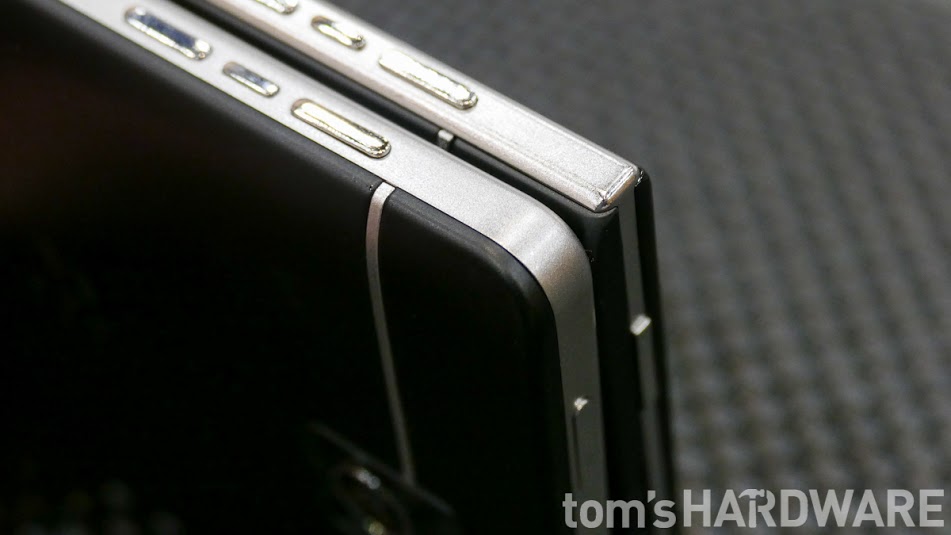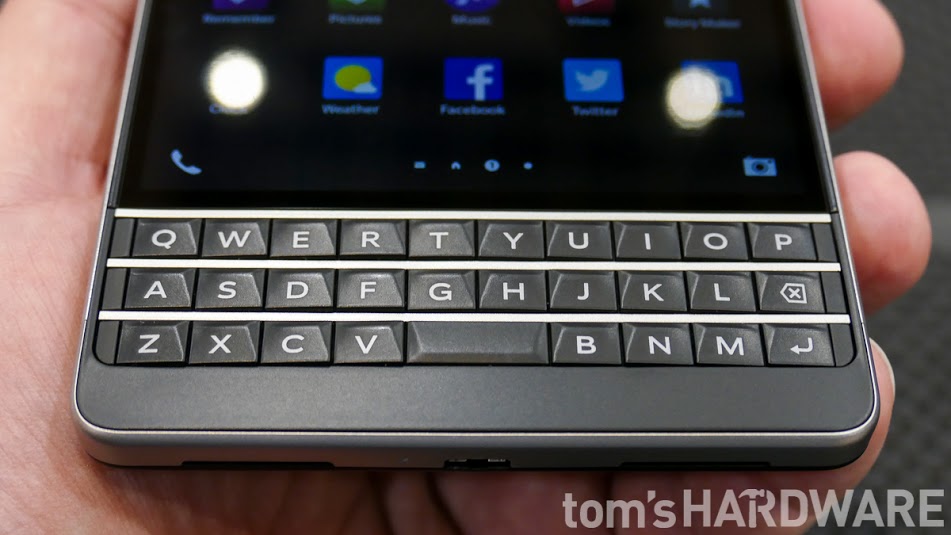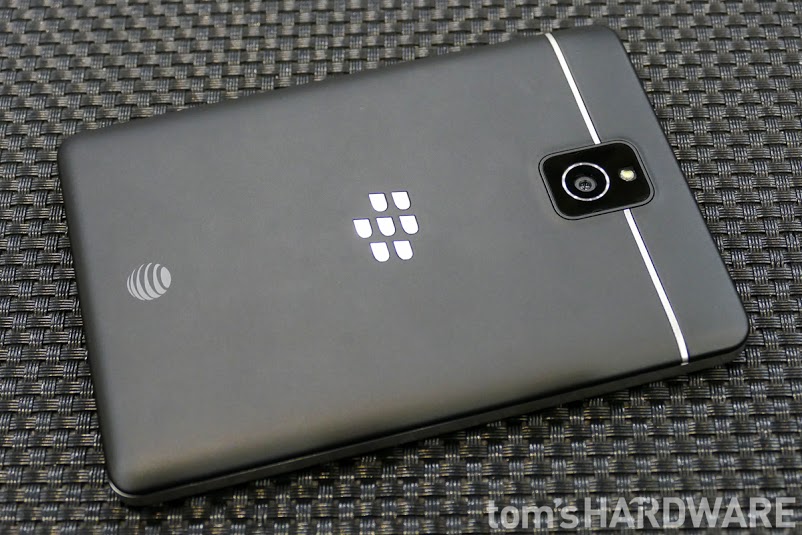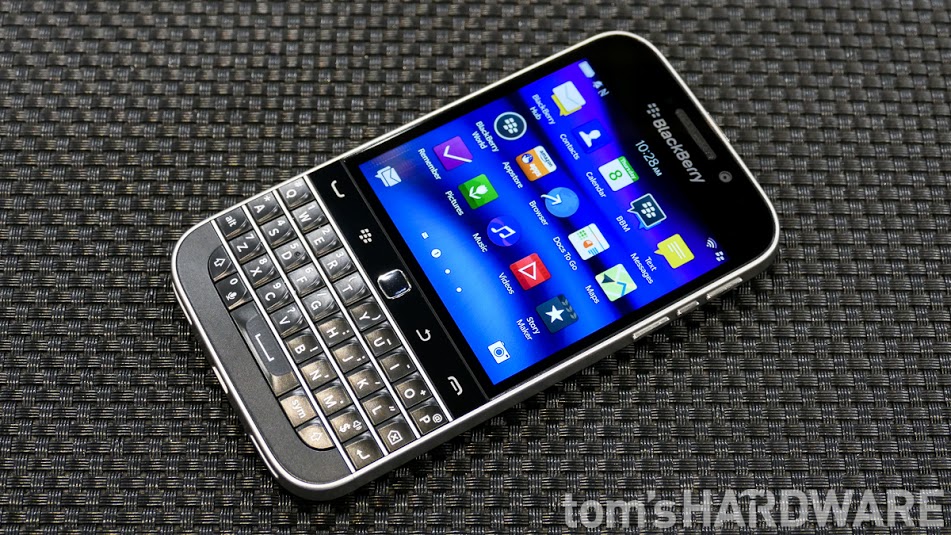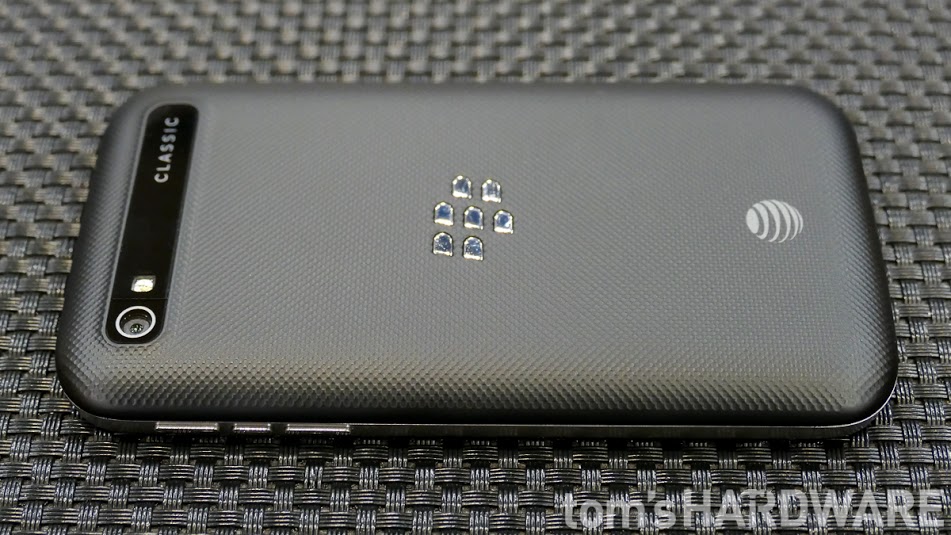Updated AT&T Version Of The BlackBerry Passport, Hands-On Video
Last week we told you about BlackBerry's CES announcement of its new(ish) AT&T specific version of the Passport. Rounded corners, rather than the squared-off ones on the original model, are the obvious change for this iteration. In fact, the design of the AT&T Passport looks a lot more like the new BlackBerry Classic (shown in the image further down this post).
| SoC | Qualcomm Snapdragon 801 (MSM8974AA) |
|---|---|
| CPU | Qualcomm Krait 400 (4 Core) @ 2.26 GHz |
| GPU | Qualcomm Adreno 330 @ 450 MHz |
| Memory | 3 GB LPDDR3 |
| Display | 4.5-inch IPS @ 1440 x 1440 (453 ppi), 1:1 aspect ratio with Corning Gorilla Glass 3 |
| Storage | 32 GB with microSD slot for up to 128 GB of expandable storage |
| Battery | 3,450 mAh (non-removable) |
| Cameras | Front: 2 MPRear: 13 MP f/2.0 with OIS and LED-flash |
| Audio | Stereo Speakers |
| Expansion Ports | microSD slot, USB 2.0 |
| Connectivity | Wi-Fi 802.11a/b/g/n, Bluetooth 4.0 LE, NFC, FM RadioCat 4 LTE Bands 1/2/3/4/5/7/8/13/17/20 |
| Dimensions | 131 x 90.5 x 9.25 mm |
| Weight | 194 g |
| Operating System | BlackBerry 10 OS 10.3.1 |
While we were at CES, we were able to get a brief hands-on with the new Passport, which you can see in the video below. We also included a quick look at the AT&T version of the Classic, too.
Prior to seeing the AT&T Passport, we spent a little time with the original version. While it's certainly not a device for everyone, we understand BlackBerry's design philosophy. BlackBerry still has a very loyal following and there are a lot of fans of this oddly shaped smartphone.
In my time using one, I found that there was a lot to like. It has powerful, up-to-date hardware, a great screen, good camera, outstanding battery life, and of course an amazing keyboard. BlackBerry also has expanded access to Android apps on their platform by using the Amazon Appstore. Also, since not every Android app is available from Amazon, especially those that require Google Play services, there are now unofficial and unsupported methods to install the Google Play store on the Passport. After doing this, you'll have access to nearly every Android app, although some apps, especially games, don't work well with the Passport's unique screen aspect ratio.
While working on this post, we noticed that the press images for the new Passport were dated October 21, so clearly the AT&T version of the Passport has been in the works for some time. When the Passport first launched in September, AT&T was announced as the exclusive U.S. carrier, but no release information was given. Apparently, AT&T was waiting for the redesigned version to become available. It's just a little odd that it took so long for it to be formally announced. Perhaps AT&T didn't think BlackBerry's latest could compete with the other phone releases of last fall, or it's simply that BlackBerry couldn't deliver enough units until now.
We asked BlackBerry if this well-rounded version of the Passport will ever be available on other carriers. While it's exclusive to AT&T for now, BlackBerry said it may be available from other carriers, or even directly from BlackBerry like the original Passport, in the future.
At CES 2015, we also got a quick look at the AT&T Classic. Unlike the Passport, there haven't been any changes apart from the addition of the AT&T logo on the back, as can be seen below.
Get Tom's Hardware's best news and in-depth reviews, straight to your inbox.
The AT&T BlackBerry Passport does not have a hard release date yet, although it should be announced in the coming weeks. It will be offered for free on the AT&T Next plan, $200 with a two-year contract, and $650 outright. The AT&T BlackBerry Classic also doesn't have a release date yet and will be free on the AT&T Next plan, $50 with a two-year contract, and $420 outright. If interested, you can register on AT&T's site to be emailed when more information about their availability is released.
Follow Alex Davies @alexbdavies. Follow us @tomshardware, on Facebook and on Google+.
-
zetzabre Well, now i see a decent Blackberry phone. Now only that, i see a decent querty phone for the first time. Unfortunately, i have a Galaxy Note 3 that works fine for now.Reply -
Gaidax Tiny display, unwieldy form and it's so heavy... I mean it actually weights more than the huge Note 4.Reply
I don't know what they were thinking really. Is it so hard to come up with a true flagship phone that can be used BOTH for business and pleasure? -
jrharbort ReplyTiny display, unwieldy form and it's so heavy... I mean it actually weights more than the huge Note 4.
The screen is anything but tiny. It may be "only 4.5 inches", but remember this is a 1:1 aspect ratio screen, and they measure the size diagonally. That puts it in the same league as phablets, width-wise. The Passport body is over 90mm wide, while the Note 4 body is under 79mm wide. It also has a larger battery than the Note 4, and a full keyboard. That's why it weighs more
I don't know what they were thinking really. Is it so hard to come up with a true flagship phone that can be used BOTH for business and pleasure? -
Barantos1 why do people care if phones are heavy? If you are unable to hold a phone you should immediately sell it and find a personal trainer. I ordered a white passport from blackberry. Should be arriving this week. I can;t wait the screen and the keyboard look amazing.Just like Wendy's I would prefer not to cut corners...Reply -
MobileEditor ReplyTom, your video service sux, can't you use youtube like normal people?
You can watch the videos on our YouTube channel too.
- Matt H.

